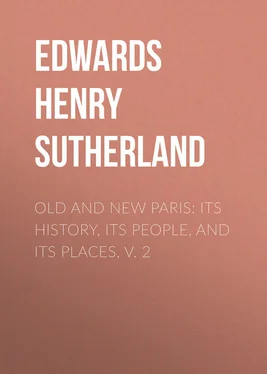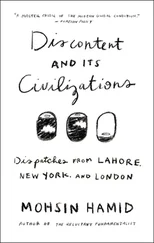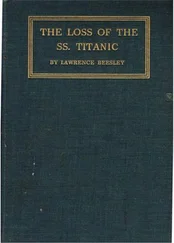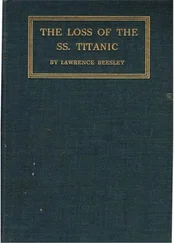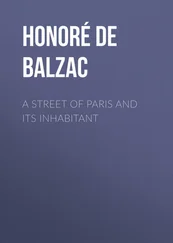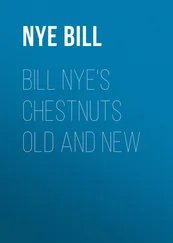Henry Edwards - Old and New Paris - Its History, Its People, and Its Places, v. 2
Здесь есть возможность читать онлайн «Henry Edwards - Old and New Paris - Its History, Its People, and Its Places, v. 2» — ознакомительный отрывок электронной книги совершенно бесплатно, а после прочтения отрывка купить полную версию. В некоторых случаях можно слушать аудио, скачать через торрент в формате fb2 и присутствует краткое содержание. Жанр: foreign_antique, foreign_prose, Путешествия и география, на английском языке. Описание произведения, (предисловие) а так же отзывы посетителей доступны на портале библиотеки ЛибКат.
- Название:Old and New Paris: Its History, Its People, and Its Places, v. 2
- Автор:
- Жанр:
- Год:неизвестен
- ISBN:нет данных
- Рейтинг книги:4 / 5. Голосов: 1
-
Избранное:Добавить в избранное
- Отзывы:
-
Ваша оценка:
- 80
- 1
- 2
- 3
- 4
- 5
Old and New Paris: Its History, Its People, and Its Places, v. 2: краткое содержание, описание и аннотация
Предлагаем к чтению аннотацию, описание, краткое содержание или предисловие (зависит от того, что написал сам автор книги «Old and New Paris: Its History, Its People, and Its Places, v. 2»). Если вы не нашли необходимую информацию о книге — напишите в комментариях, мы постараемся отыскать её.
Old and New Paris: Its History, Its People, and Its Places, v. 2 — читать онлайн ознакомительный отрывок
Ниже представлен текст книги, разбитый по страницам. Система сохранения места последней прочитанной страницы, позволяет с удобством читать онлайн бесплатно книгу «Old and New Paris: Its History, Its People, and Its Places, v. 2», без необходимости каждый раз заново искать на чём Вы остановились. Поставьте закладку, и сможете в любой момент перейти на страницу, на которой закончили чтение.
Интервал:
Закладка:
The Marquis de Favières, a great borrower and notorious for never returning his loans, went one day to the financier Samuel Bernard, and said to him: “I am going to astonish you, sir. I am the Marquis de Favières. I do not know you, and I have come to borrow five hundred louis.” “Sir,” said Bernard, “I shall astonish you still more. I know you, and I am going to lend you the money.”
The Parisian “badaud,” an intensification of the London Cockney, has a reputation, moreover, for making blunders and bulls of the Irish kind. One of them, hazarding some speculations on the subject of astronomy, is said to have observed that the moon was a much more important orb than the sun, because the sun “comes out only in the day-time, when everyone can see perfectly well. The moon, on the other hand, shines in the darkness, when a light to guide us is really wanted.”
Another Parisian of the dull species once wrote to a friend as follows: “A man has just called me a villain, and threatened, if I ever speak to him again, to kick me. What do you usually do in such a case?”
A Parisian who, without knowing much about horse-flesh, had just bought a horse, was asked whether the animal was timid. “Not at all,” he replied. “He has slept three nights running in the stable by himself.” Another Parisian “sportsman” was reproached by a connoisseur with having clipped his horse’s ears. He explained that the animal was in the habit, whenever alarmed, of pricking up his ears, and that he had cut them in order to cure him of his timidity.
A literary specimen of the Parisian Cockney is said to have written, in an historical novel, the following remarkable sentence. “Before the year 1667 Paris at night was plunged in total darkness, which was made darker than ever by the absence of gas-lights, not yet invented.”
In a Russian history of Poland, the Poles were seriously reminded that it was not until after the partition of Poland that the streets of Warsaw were lighted with gas.
CHAPTER VI.
THE STREETS
WE have already searched the streets of Paris for types of character. Let us proceed to look at one or two characteristic street objects, after first taking a general view of the streets themselves.
The streets of Paris divide themselves into two categories: those parallel to the Seine and those at right angles to it. In the first the numbers follow the course of the stream, in the second they begin from that end of the street which is nearest to the river. The traveller, however, finding himself in any particular street, cannot in the present day tell at once to which category it belongs, inasmuch as the old distinction of colour is no longer preserved, by which the parallel streets used to be numbered in red, and those at right angles in black.
All the Paris streets are lit up throughout the night. Early in the morning, before daylight, companies of scavengers collect the city refuse in heaps which, some hours afterwards, are carted away into the neighbouring country to fertilise the soil. During the day other scavengers clear the highways of whatever dust or mud they may have accumulated.
Every day in summer water-carts sprinkle the principal thoroughfares. These carts carry behind them an apparatus which flings the water over the whole width of the street. In streets which are rather narrow, or when the cart cannot keep exactly to the middle, the pedestrians come in for a part of the municipal spray, as also do vehicles which are low or open. It is prudent, therefore, to keep one’s eye on the water-cart, unless a gratuitous shower-bath is absolutely desired.
Every public way bears a distinctive name. Extended thoroughfares are not infrequently divided up into portions, each named separately; this is due sometimes to local circumstances, sometimes to the fact that in the olden days it was a caprice of the citizens frequently to change the title of the street in which they resided. It was not until the seventeenth century that the municipal administration officially intervened in this matter. Then, however, the titles were less often derived from local circumstances, adulation lavishing on the highways and byways the names of princes and other personages of wealth or power. Under Louis XIV. a certain proportion of street names were also drawn from royal victories or from those officers who had achieved them. The Revolution inscribed with the names of its heroes, its martyrs, its triumphs, its principles, not only the new streets which it opened, but even the old ones from which it wished to efface monarchical titles. The Empire followed the same system. The Restoration returned to the Royalist traditions; and the monarchy of July united those of the Revolution and the Empire, mingling the ancient glories of France with the modern, and illustrious foreigners with natives of renown.
To pass, however, from streets to street-illumination. Parisians of to-day, accustomed to the brilliancy of gas, which turns night almost into day, can scarcely believe that two centuries ago their town knew no other light than that of the moon and stars. It was the case, nevertheless; previously to 1667 not a public lamp existed. The necessity of street illumination had already, however, been recognised by a civic regulation which required householders, in those localities where garrotting had become too frequent, to place beneath their first-floor window, at 9 p.m., a lantern which might cast its beams into the street. It was M. de la Reynie, lieutenant of police for Paris, who first, in 1667, instituted public lamps. At the outset a lamp was placed at the end of each street, with a third in the middle. Then, after a time, the number of lamps was increased in streets of exceptional length. Each containing a candle, these “lanternes” were suspended by a rope from a crooked iron bar in the form of the gallows.
The lamps introduced by La Reynie marked a certain progress in civilisation. They at least diminished in a remarkable manner the number of night attacks. La Reynie’s lanterns lasted until 1776, when they were replaced by so-called reverbères, or reflecting lamps. In a few months more than half the streets in Paris were illuminated by the new lamps, which, with some modifications, remained in use until the introduction of gas.
The most celebrated of all the lamps in Paris was the lamp or “lanterne” of the Place de la Grève, which on the outbreak of the Revolution was made the instrument of several summary executions, the first victims being two retired soldiers and Major de Losme, accused of firing on the people at the capture of the Bastille. The cry of “À la lanterne!” was now constantly raised; and when the emigration began a number of aristocrats were dragged to the fatal lamp, but saved at the last moment by the intervention of Bailly and La Fayette. The notorious Foulon, detested by everyone, was really hanged from the fatal lamp. His son-in-law, Bertier, was also dragged beneath the lamp, but he defended himself, snatched a musket from one of his guards, and fought until he was shot down. On the 5th of October the brave Abbé Lefèvre d’Ormesson, a member of the Commune, was half hanged by a number of wild women. Fortunately for him, the rope was cut before it had done its work. About the same time the mob, perishing from hunger, hung to the lamp a baker named François, accused of hoarding up his bread. François is said to have been the “last man tied up to the illuminated gallows” of the Place de la Grève. Camille Desmoulins published, some eighty years before Henri Rochefort made use of the title, a pamphlet called “La Lanterne,” or, to quote the title in full, “Discours de la Lanterne aux Parisiens.” It bore this epigraph: “Qui male agit odit lucem,” which he translated thus: “Only rogues fear the light.”
Читать дальшеИнтервал:
Закладка:
Похожие книги на «Old and New Paris: Its History, Its People, and Its Places, v. 2»
Представляем Вашему вниманию похожие книги на «Old and New Paris: Its History, Its People, and Its Places, v. 2» списком для выбора. Мы отобрали схожую по названию и смыслу литературу в надежде предоставить читателям больше вариантов отыскать новые, интересные, ещё непрочитанные произведения.
Обсуждение, отзывы о книге «Old and New Paris: Its History, Its People, and Its Places, v. 2» и просто собственные мнения читателей. Оставьте ваши комментарии, напишите, что Вы думаете о произведении, его смысле или главных героях. Укажите что конкретно понравилось, а что нет, и почему Вы так считаете.
